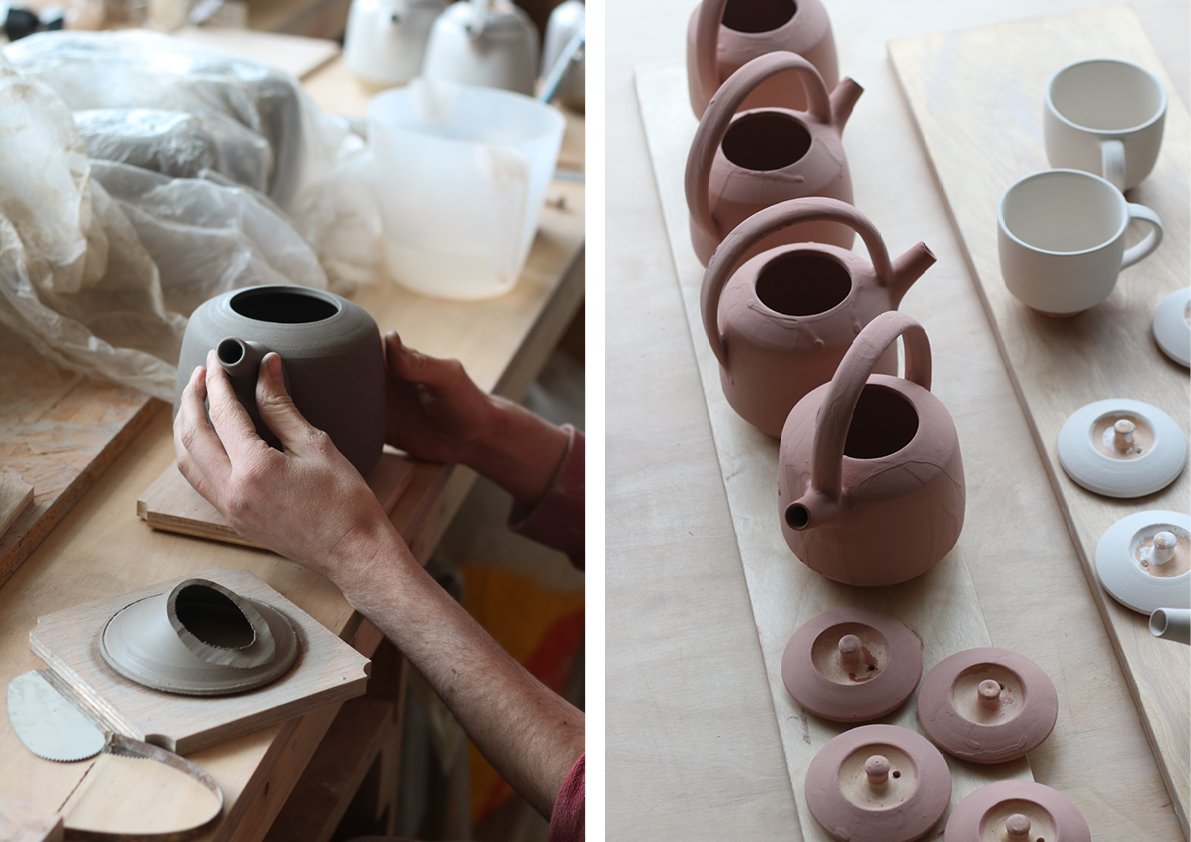
We spoke to the husband and wife team behind Sheffield based Pottery West.
How did Pottery West begin?
We arrived at ceramics in a rather long-winded way - both studying creative degrees but then working in various jobs upon graduation. For Matt, who had studied design and was working as a designer, it quickly became apparent that being sat down at a desk and computer all day wasn't for him, and so he trained as a baker in Berlin, and then in Sheffield, which is how we came to live here (although we were both raised here).
I worked for a small company at the Yorkshire Artspace (which is where our studio is now), writing about and promoting makers and artists, and quite quickly I became immersed in this world of making and craft.
We enrolled in some pottery evening classes with local ceramicist, Penny Withers, and really enjoyed it. But one hour a week was not enough time to really learn. We already had a studio workspace of our own, we were gifted a kiln, and we drove to South Wales from Sheffield in our tiny car to buy the contents of a potter's studio, who was retiring. For a long time we made things but didn't sell them, or didn't even fire them, just to learn.

Where did you train, and where did you learn the technicalities of ceramics?
I studied Fine Art at Goldsmiths and Matt studied Design, also at Goldsmiths. They were fun, challenging and sometimes perplexing years in which I think we learnt an awful lot. I regret that I never even stepped foot in the ceramics department during my time there; graduating with a well-honed skill, such as throwing, would have been beneficial and probably, at the time, quite rebellious for the course which was notorious for its conceptual focus.
I think we both found salvation in ceramics because it is so process-led and technical, and we're still constantly learning the technicalities of our craft, which is, on one hand, almost pure chemistry with the glazes, and with the throwing and other aspects, improved greatly by repetition and sheer hard work. We're more or less completely self-taught in making ceramics.

Can you tell us a little on the set up of your studio, the processes you employ?
Our studio focuses on wheel-thrown pottery; Matt does all the throwing and trimming and I the glazing and all the other miscellaneous tasks. Our processes are quite traditional. We fire in an electric kiln but are also involved in a small wood-fired kiln in Sheffield, and so we've started to experiment with firing in a reduction atmosphere.
We have two spaces on the top floor of the Yorkshire Artspace, which is a really wonderful purpose-built space in the centre of Sheffield, full of a diverse mixture of makers and artists. One space is for mixing glazes and firing the kilns and the other is for throwing and designing.

Where do you source your materials?
Pretty much every material we use comes directly from the earth. Most of our materials we purchase, and they come from many different places, often as a by-product from industry. We use clays from Derbyshire and Cornwall and we sometimes use wood-ash in our glazes which is sourced from trees in my parents' garden in South Yorkshire (mainly willow and ash). More and more we are becoming interested in material exploration and the process of simplifying our material palette as a process of experimentation and education too.


How do you balance family life with your work?
Balancing family life and work is a big subject in our household, but only because we absolutely love both our work and being parents and want to do the best job for both. It's true that we work long hours in the studio but we're also quite strict about having time off to be with our little boy. I think we've carved out a lifestyle for our family which is quite simple, focussed on making, being resourceful and explorative.

What's the most important tool or object in your studio?
Quite a tricky one but probably the kiln because this enables the transformation of our work into the end result - through the application of heat, transforms clay into ceramic and minerals and powders into glass.
When we started making the teapots for TOAST a few months back, we needed some new sculpting tools for attaching the spouts and handles, and Matt's mum suggested that we take a look in his dad's old studio attic. Steve died in 2016 and was a brilliant sculptor, working sometimes in clay, but mainly in plaster and bronze. We used some beautiful wooden tools, all from Tiranti, and working with them felt like a lovely way to remember Steve. We spent a lot of time working on the teapots and musing over Steve's life and work and the childhood Matt enjoyed.


What is the best advice you have ever been given and could pass on?
Matt's advice would be to not get too fixated on the end result - and smash any pots that aren't good enough before they make their way into the world. My advice would be to persevere, especially when you have failed in something. I think most success is related to perseverance and sticking at something.
Images by India Magnus. Last three images by Helena Dolby.
Add a comment